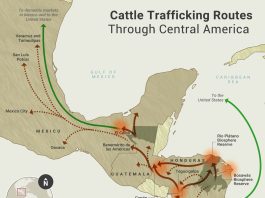
If you’d like to know how to reduce deworming and still have healthy goats or sheep, you’ll want to check out the the ATTRA/NCAT publication “Managing Internal Parasites: Success Stories.” It includes stories from two sheep producers and one goat producer on the management steps they took to almost permanently eliminate deworming from their operations. This excerpt from Paul Casey of Heifer Project International gives you a good idea of the solution he found to work best:
“Here’s the silver bullet of parasite control in small ruminants…or at least what I think is the closest thing. It is not administered orally, intramuscularly or subcutaneously. It is not reconstituted or refrigerated. In fact, the sheep don’t even need to [be] put in the corral. Interested? Then read on. But beware; it may be nothing more than the ramblings of a sheep grazier.
“I manage a 60-ewe sheep flock at Heifer Project International’s Ranch in Perryville, Arkansas. About 10 years ago, we started looking at alternative methods of controlling gastrointestinal parasites in sheep. We tried garlic juice, papaya seeds, pumpkin seeds, an herbal dewormer, grazing chicory, grazing sun hemp, and intensive rotational grazing. In the end, rotational grazing was the only practice we kept. Using 120V and/or battery powered chargers, poly posts, poly wire, and temporary waterers, sheep were moved to fresh forage every two to four days, each April through November.
“We implemented stringent culling and rotational grazing at the same time and within a few years parasite problems in the ewes were nearly non-existent. Some years, we did not have to deworm a single ewe. With the exception of the chicory and sun hemp trials, nearly all grazing was on permanent pasture. Cool season forages were predominantly fescue, ryegrass, clover, and vetch. Summer forages were dallisgrass, bahiagrass, foxtail millet, and crabgrass.
“While we had minimal problems with the ewes, obtaining consistently good lamb weight gains, especially after weaning (at 4 to 6 months old) was very difficult. Had we not pushed the lambs so hard by only deworming at FAMACHA© 4 and 5, they might have performed better. We had only one effective dewormer left, and my goal was to use it as little as possible. Grazing more summer annuals and speeding up the rotation may have helped improve the weight gains.
“While I know that our strict ewe culling and ewe lamb selection helped reduce our worm problems, I believe the grazing is what made it successful. By controlling what the sheep eat, when they eat it, and how long they are on a given section of pasture, the manager controls forage intake, forage quality, plant regrowth, and relative ingestion of parasite larvae. Grazing management is the most powerful tool we have for maintaining animal health and performance. While many people use FAMACHA scores as an indicator of parasite load, I use it as an indicator of my management (pasture and breeding).
“Keeping sheep behind an electric fence is not likely as hard as you have heard it is. A good strong charger, poly posts, poly wire, and persistence, on your part, is all that is needed. I have rarely used more than three strands of poly wire and frequently used two strands. If sheep have enough quality forage to eat and the fence is kept consistently hot, rotationally grazing sheep is easy.
“Was this what you expected for a silver bullet? I hope so. We need to look at anthelmintics, not as a tool in our tool box, but as a band aid to fix a management problem.”
Dave Scott shares a similar story based on his experience raising a flock on irrigated pasture in Montana. By managing his grazing and only worming ewes and lambs with FAMACHA scores of 4 and 5, he went from deworming three to four times a summer to not deworming any of his flock within just three years.

The last story in the publication is from Dr. An Pieschel, Small Ruminant Specialist and owner of Goats Unlimited in Tennessee. She started working with goats in Hawaii, where the climate means there’s no dead time for parasites. In spite of that extreme challenge, she reduced the need for worming over time using culling, good nutrition, and good grazing management. She went from a herd she described as unhealthy in 1985 to a herd that she stopped worming in 1994. It’s now been more than twenty years since she’s dewormed a goat. You’ll want to download the free publication for the details on how she’s managed this.

ATTRA/NCAT has taken the next step in getting you started on these kinds of management practices with “Tips for Preventing Internal Parasites, which is also available for free download. Stay tuned for more. In coming weeks we’ll cover treatment and culling for parasites in more detail.





This is the same strategy the nematodes use, selection pressure and population genetics.
There is also the potential for a nematode fungus, D. flagrans that maybe developing in the well managed healthy pasture soils.
Comments are closed.